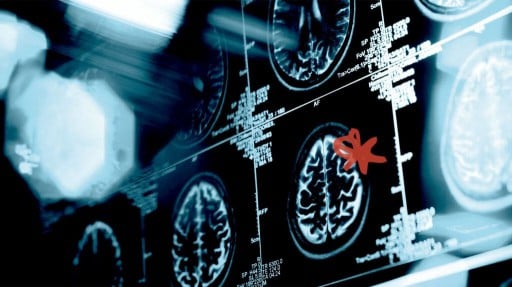Does daydreaming help consolidate memories?

The workings of the brain are complex, and research about brain activity is ongoing.
One area of interest is neuron activity during daydreaming and the potential benefits that daydreaming may hold.
A recent study examined daydreaming in mice by exposing them to images and found similar neural activity between times of daydreaming and looking at the actual images later in the day after more exposure.
The results indicate that daydreaming may help with components like learning and memory consolidation.
Daydreaming is a common experience for people. However, researchers are still seeking to understand the complexities of what is happening during daydreaming. They are also seeking to understand how daydreaming may benefit the brain.
A study published inexamined the neural activity of mice during periods of daydreaming. It found distinct neural patterns and activation of the hippocampus, an area of the brain that helps with memory.
The findings suggest that daydreaming may assist with learning and memory.
However, more research is required to understand the study’s results and the clinical implications.
What happens in the brain during dreams and daydreams?
The brain is a complex organ that oversees how the rest of the body functions. It contains many neurons that pass signals. These neuronal signals allow people to move, remember, and think.
Different structures in the brain control different functions, and they all work together to help ensure proper bodily functioning. For example, the hippocampus assists in forming long-term memories.
“Memories are often defined as specific patterns of activity of a group of neurons. These patterns can be specific, with the same pattern of neurons firing to the same types of stimuli. In what is becoming known as the ‘central dogma’ of memory consolidation, the hippocampus, a brain region critical for learning a memory, often replays these patterns, even in the absence of the sensory input that first caused them.”
“These ‘reactivations’ or ‘replays’ are thought to occur for the brain to strengthen the connections between neurons. Known as memory consolidation, this process is thought to be the engine that prevents us from forgetting,” Dr. Cooper added.
Daydreaming may offer certain benefits, such as helping people plan for potential challenges in the future. Researchers of the current study wanted to understand more about what happens during daydreaming and what benefits these brain activities might have.
Dr. Cooper further explained: “Hippocampal replay is most readily observed during sleep, where strong bursts of electrical activity in the hippocampus propagate throughout the rest of the brain’s cortex. In recent years, replay has also been observed during periods of quiet waking periods as well. The present study sought to further understand the dynamics of awake reactivations.”
Daydreaming may support memory consolidation
Researchers wanted to focus on brain activity during periods of daydreaming and the changes in brain activity that occur over time. This study involved mice and focused on showing mice two images and a blank screen.
The mice were shown the images several times over the course of the day. Researchers were then able to measure brain activity during these time frames to figure out what was taking place.
“Since we can’t ask the mouse what it’s thinking about, we basically took an indirect strategy to try to figure out what the mouse’s brain was chewing on during quiet periods when the mouse looks at a blank screen,” he said.
“The strategy involved showing the mouse one of two pictures over and over, with a minute in between each picture where the mouse just watched a blank gray screen. At the same time, we track the activity patterns of neurons in the visual cortex. One key advance was that we recorded from many more neurons at the same time tha[n] is commonly done, around 7,000 neurons simultaneously,” Dr. Andermann explained.
The researchers were able to observe key reactivations of neural activity during the daydreaming periods. THEY defined reactivations as “patterns of activity that are similar to those that occurred during recent experiences.”
So, during daydreaming, the mice’s brains reacted in a way similar to when they were viewing the image. However, the researchers found distinct patterns in the neural activity during the periods of daydreaming.
They found that the neural activity was more similar to what the mice’s neural activity looked like in the future. Researchers also noted distinct activity in the hippocampus happening at the same time.
Dr Andermann explained:
“The reactivation patterns during quiet waking after the first few times the mouse sees a picture actually look more like what the brain response to that same picture will look like in the future, after seeing the picture 60 more times. In other words, these offline reactivation patterns actually predicts future plasticity in how the brain responds to a picture, and also predicts how the brain gradually learns to distinguish the two novel pictures as being different. This finding led us to speculate that the reactivation patterns are doing some of the work of driving brain plasticity and learning, as if they were training the brain to see the two pictures differently.”
The results support the idea that daydreaming may help with processes like, which allows for forming long-term memories and associative learning.
“During daydreaming, the study suggests, neurons remember what was shown to them and consolidate their responses to it. Thus, we are not just passive receivers, but we actively shape the way we process information from the world,” said Dr. Pinotsis.
Do the findings apply to humans?
The main limitation of this research is that it used mice, but this also means there are many opportunities for future research in this area. While this study was able to look at activity from thousands of neurons, it could not capture all the components of everything that was happening in the brain.
Future research can confirm the findings and examine how they may apply to people.
As Dr. Cooper noted, “[i]t is important to keep in mind that the study was performed in mice, thus direct comparisons to humans should be held with caution.”
“However, the more general mechanisms of hippocampal reactivation have been observed in human brains, opening the door for future studies. Further, a downside of calcium imaging is that the timescale of imaging is often slower than that of other methods. Given reactivations are often fast events, future work should attempt to replicate the studies findings with these methods,” Dr. Cooper cautioned.
Nevertheless, the results point to the potential benefits of daydreaming and opportunities for understanding what’s happening in humans and animals moving forward.
Dr. Andermann told us: “I previously have worked on brain imaging methods in both humans and animal models, and I think the best way forward is to increase the dialogue between neuroscientists studying humans and those studying animal models, as well as psychologists and psychiatrists, so that the research moves in a back-and-forth manner to ultimately help us understand what’s going on in our brains when we’re awake but not paying attention to the outside world.”








